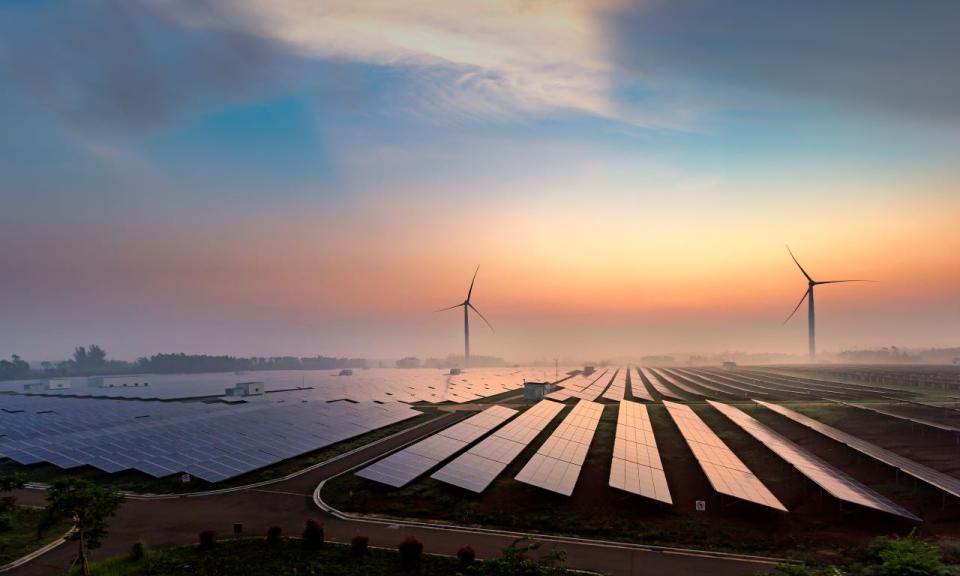
Demand growth for renewables provides ample opportunities for investment.
Another start to summer and again India is engulfed in a heatwave with temperatures soaring to 50 degrees. An alert has been out in the national capital asking residents to limit their outdoor activities. Cyclone Vayu recently battered the coasts of Gujarat while residents in Chennai are running out of water, facing their worst drought in history. These are the signs of climate change.
But the big news for most overseas observers has been the re-election of the Narendra Modi led National Democratic Alliance, this time with a bigger majority. Pundits have interpreted this as a signal for increased growth and a push for renewables in the Indian economy. Given growing awareness of climate change and the Prime Minister’s ambitious outlook on renewable energy, has clean energy’s moment finally arrived in India?
Demand growth for renewables
On the face of it, Modi’s re-election bodes well for the country’s clean energy sector. The government is expected to take forward bigger ambitions on renewables. While wind and solar energy are already booming in India, renewables capacity will have to be scaled up five times its current levels by 2030 to meet India’s commitments towards the Paris Agreement. India could generate over a quarter of the global growth in energy demand up to 2040, with the greatest share of growth attributable to power generation. Renewables presently comprise over 21 per cent of the nation’s total installed power capacity of 350 gigawatts. It’s already targeted to reach 40 per cent by 2030 – that alone is over a $500 billion investment opportunity.
Demand growth for renewable energy has so far been driven by renewable purchase obligations with distribution companies statutorily required to purchase a certain percentage of their electricity from clean energy sources.
Auctions have clearly led to a steady decline in bid prices of solar energy in India, which are now the lowest in the world
Procurement for distribution companies is centralised and conducted by public sector companies like Solar Energy Corporation of India (SECI), whose mandate has broadened to cover the entire renewable energy domain, and NTPC, India’s largest energy conglomerate. The processes have evolved from feed-in tariff mechanisms to competitive auctions in which solar is beating gas and coal-fired projects by a wide margin on price.
Auctions and development of direct corporate procurement
The choice of the auction mechanism for solar energy was motivated by the need for price discovery, increasing transparency and competition while reducing industry concentration. Research by Gireesh Shrimali and others in 2014 and 2016, confirmed that auctions do indeed reduce costs, although their impact on total deployment has been questionable.
On the positive side, the auction mechanism led to the emergence of new players, reducing concentration and helping to develop a new investor ecosystem. Auctions have clearly led to a steady decline in bid prices of solar energy in India, which are now the lowest in the world. But these prices have also led to developers failing to construct projects that proved to be loss making. Low prices also set off a vicious cycle in which SECI set very tight price caps. Eventually, even the most aggressive developers got discouraged and the entire process began to stall.
Our aim is to help new investors better understand how resource potential, availability of physical infrastructure, policy drivers and financial incentives mix to generate a buy or sell signal
One silver lining from problems in the competitive tendering market has been the development of a direct corporate procurement segment. This includes, with the exception of residential projects, rooftop solar (3.4 gigawatts) and open access solar projects (2.9 gigawatts). Though these segments constitute a fraction of the total installed capacity, their growth over the last two years demonstrates the pace at which companies in India could catch up with counterparts in the US, Europe, and Japan.
In 2018, global corporate renewable procurement reached a record high of over 13 gigawatts. Sixty percent of these deals were made by US corporates, led by tech titan Facebook. This trend is now gaining some traction among Indian corporates, but there’s a big question whether the structure of the Indian power sector can facilitate an uptick of direct participation by corporate buyers.
What really stimulates renewable energy investment?
Over the summer, we are embarking on research that analyses variables driving solar capacity deployment for utility scale projects set up through auctions mechanism as well as those set up for direct corporate procurement such as rooftop solar and open access. Cross sectional analysis of these two market segments can provide insights into factors that drive the entire industry and those that are unique to each segment.
For example, analysing the concentration of projects in certain parts of the country will reveal factors that are attractive to the industry. To illustrate, almost 90 per cent of utility scale solar installation are located in nine states, mostly in Southern and Western parts of the country, whereas more than half the projects deployed under a corporate power purchase agreement are located within the state of Karnataka.
Our aim is to help new investors better understand how resource potential, availability of physical infrastructure, policy drivers and financial incentives mix to generate a buy or sell signal. The analysis will provide insights into policies and strategies that have been most effective and can be prioritised for India to meet its existing renewable energy targets, and those that may be in the pipeline from the re-elected national government.
The whole world is watching and hoping for favourable results. Solar power will not stop the suffering from what is becoming the new norm of extreme weather in India such as scorching summers or violent cyclones, but people of India will need more affordable power to protect themselves from the worst. That’s why more research on what really stimulates renewable energy investment in India really matters.

